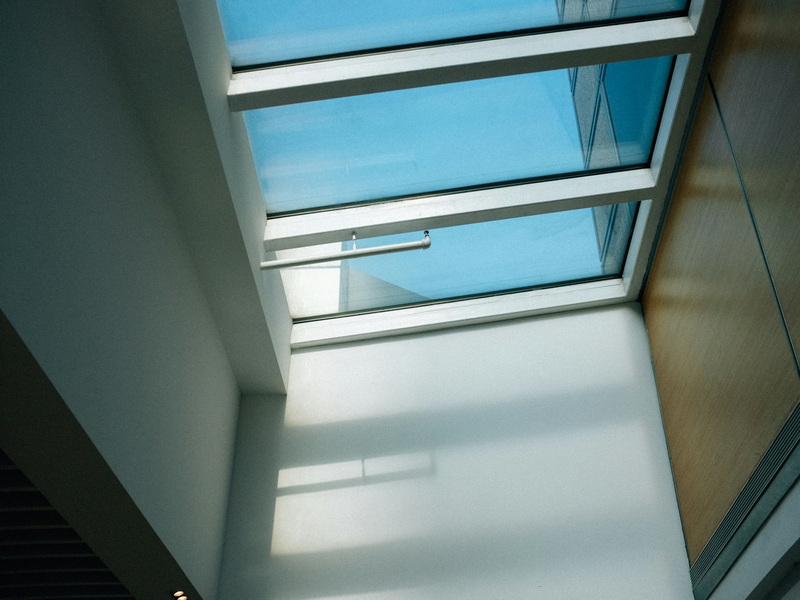English 




Views: 222 Author: Astin Publish Time: 2025-02-21 Origin: Site



Content Menu
● The Science Behind Aluminum Foil Insulation
● Benefits of Using Aluminum Foil on Windows
>> Versatility
>> Privacy
● How to Apply Aluminum Foil on Windows
>> Tips for Effective Application
● Potential Drawbacks and Considerations
>> Alternatives to Aluminum Foil
● FAQ About Aluminum Foil on Windows
>> 1. Does aluminum foil on windows really keep the cold out?
>> 2. Is it better to put aluminum foil on the inside or outside of windows?
>> 3. Will aluminum foil damage my windows?
>> 4. How long can I leave aluminum foil on my windows?
>> 5. Are there alternatives to using aluminum foil on windows?
Aluminum foil, a staple in most kitchens, is often used for cooking and food storage. However, its potential as an effective insulation material, particularly for windows, is often overlooked[1]. The application of aluminum foil on windows can help manage indoor temperatures by acting as a reflective barrier[1]. This article explores the functions, benefits, and considerations of using aluminum foil to insulate windows, providing a comprehensive guide for homeowners looking to improve energy efficiency and comfort.

Aluminum foil's effectiveness as an insulator stems from its high reflectivity. It reflects about 90-96% of radiant heat, making it an excellent barrier against heat transfer[1][3]. This property is beneficial in both summer and winter:
- Summer: Aluminum foil reflects sunlight away from windows, reducing the amount of heat entering the home and keeping indoor temperatures cooler[1][5].
- Winter: It reflects indoor heat back into the room, minimizing heat loss through windows and helping to maintain a warm environment[1][3].
By reflecting radiant heat, aluminum foil helps to maintain a more consistent indoor temperature, reducing the reliance on heating and cooling systems and lowering energy bills[1].
One of the primary advantages of using aluminum foil is its affordability. Compared to specialized window films or treatments, aluminum foil is inexpensive[1]. A standard roll can be purchased for a few dollars, making it accessible to most homeowners[1].
Applying aluminum foil to windows is a simple DIY task that requires minimal tools and effort. The basic steps include:
- Measuring the Window: Measure the windowpane to determine the size of the foil needed.
- Cutting the Foil: Cut the aluminum foil slightly larger than the measured area to ensure full coverage.
- Applying the Foil: Attach the foil to the window using tape or adhesive, ensuring a smooth and secure fit[1].
Aluminum foil can be used in various ways to achieve different levels of insulation and privacy. It can be applied to the entire window for maximum heat reflection or used in specific areas to control sunlight and glare[1].
Besides insulation, aluminum foil also offers enhanced privacy. By blocking the view from the outside, it ensures that outsiders cannot see inside your home, providing an added layer of security and comfort[5].

For optimal results, apply aluminum foil to the exterior side of windows[1]. This placement allows for better reflection of solar heat before it enters the home and prevents heat buildup between the glass and the foil, reducing the risk of cracking[1].
- Aluminum foil (heavy-duty recommended)[1]
- Measuring tape
- Scissors or utility knife
- Tape or adhesive (designed for metal surfaces)[1]
- Cardboard (optional, for added insulation)[1]
1. Measure the Window: Use measuring tape to determine the exact dimensions of the windowpane.
2. Cut the Aluminum Foil: Cut the aluminum foil slightly larger than the measured dimensions to ensure complete coverage.
3. Prepare the Window: Clean the window surface to remove any dirt or debris. This will help the adhesive stick better.
4. Apply the Adhesive: Apply tape or adhesive to the edges of the windowpane.
5. Attach the Foil: Carefully place the aluminum foil onto the window, ensuring it is smooth and covers the entire surface.
6. Secure the Edges: Press down firmly on the edges to ensure the foil is securely attached to the tape or adhesive.
7. (Optional) Add Cardboard: For improved insulation, place a piece of cardboard behind the aluminum foil to create an air gap, enhancing thermal resistance[1]. Emergency management agencies specifically recommend using “aluminum foil-covered cardboard” between windows and drapes to reflect heat back outside[1][7].
- Use heavy-duty aluminum foil for better insulation and durability[1].
- Ensure there are no gaps where light can enter to maximize insulation and privacy[1].
- Consider using reflective window films or thermal curtains as alternatives for a more aesthetic solution[1].
One of the main drawbacks of using aluminum foil on windows is its appearance. Some find it visually unappealing, as it blocks the view and can look out of place[1].
While aluminum foil itself is not likely to damage windows, improper application or prolonged use without monitoring could lead to thermal stress issues[1]. It is crucial to apply the foil correctly and check periodically for any wear or damage[1].
If the drawbacks of using aluminum foil are a concern, several alternatives offer similar benefits without compromising aesthetics:
- Specialized Window Films: These films are designed to reflect solar heat while allowing visible light to pass through. They come in various tints and shades, providing aesthetic options alongside functionality[1].
- Thermal Curtains: Designed with insulating materials that help regulate indoor temperatures without blocking all light[1]. They provide a more aesthetically pleasing option while still being effective at reducing heat gain or loss[1].
- Cellular Shades: These shades create air pockets that provide insulation against both heat and cold while allowing some natural light into your home[1].
Using aluminum foil on windows is a cost-effective and straightforward method to insulate your home, offering benefits such as heat reflection, ease of installation, and enhanced privacy[1][5]. While it may not be the most aesthetically pleasing option, its practicality and efficiency make it a valuable solution for managing indoor temperatures and reducing energy consumption[1]. By understanding the proper application techniques and potential drawbacks, homeowners can make an informed decision about whether aluminum foil is the right choice for their window insulation needs. Alternatives like specialized window films and thermal curtains provide similar benefits with improved aesthetics, catering to those who seek a balance between functionality and visual appeal[1].

Yes! Aluminum foil reflects sunlight away from your home during summer months while retaining indoor heat during winter months, making it effective for temperature regulation[1][5].
For optimal results, apply aluminum foil to the exterior side of windows[1]. This placement allows for better reflection of solar heat before it enters the home.
No! When applied correctly (preferably on the outside), aluminum foil should not damage your windows; however, prolonged use without monitoring could lead to thermal stress issues[1].
Aluminum foil can be left on windows seasonally; however, it's advisable to check periodically for any wear or damage[1].
Yes! Reflective window films or thermal curtains provide similar benefits without compromising aesthetics or risking potential glass damage[1].
[1] https://www.weiye-aluminium.com/does-aluminum-foil-on-windows-keep-the-cold-out.html
[2] https://gist.github.com/allenfrostline/c6a18277370311e74899424aabb82297
[3] https://www.linkedin.com/pulse/significance-aluminum-foil-building-insulation-katy-ren-vqx8c
[4] https://blog.csdn.net/weixin_40289064/article/details/79669930
[5] https://www.chaluminium.com/top-8-functions-of-aluminum-foil-on-windows
[6] https://blog.csdn.net/blog_programb/article/details/107129458
[7] https://www.reddit.com/r/DIY/comments/14xf1nx/would_it_be_bad_if_i_covered_my_window_with/
[8] https://b3logfile.com/pdf/article/1653485885581.pdf
Top Aluminum Furnitures Manufacturers and Suppliers in Czech Republic
Top Aluminum Furnitures Manufacturers and Suppliers in Poland
Top Aluminum Furnitures Manufacturers and Suppliers in Belgium
Top Aluminum Furnitures Manufacturers and Suppliers in Finland
Top Aluminum Furnitures Manufacturers and Suppliers in Denmark
Top Aluminum Furnitures Manufacturers and Suppliers in Greece
Top Aluminum Furnitures Manufacturers and Suppliers in Portugal
Top Aluminum Furnitures Manufacturers and Suppliers in Austria
Top Aluminum Furnitures Manufacturers and Suppliers in Norway
Top Aluminum Furnitures Manufacturers and Suppliers in Sweden
